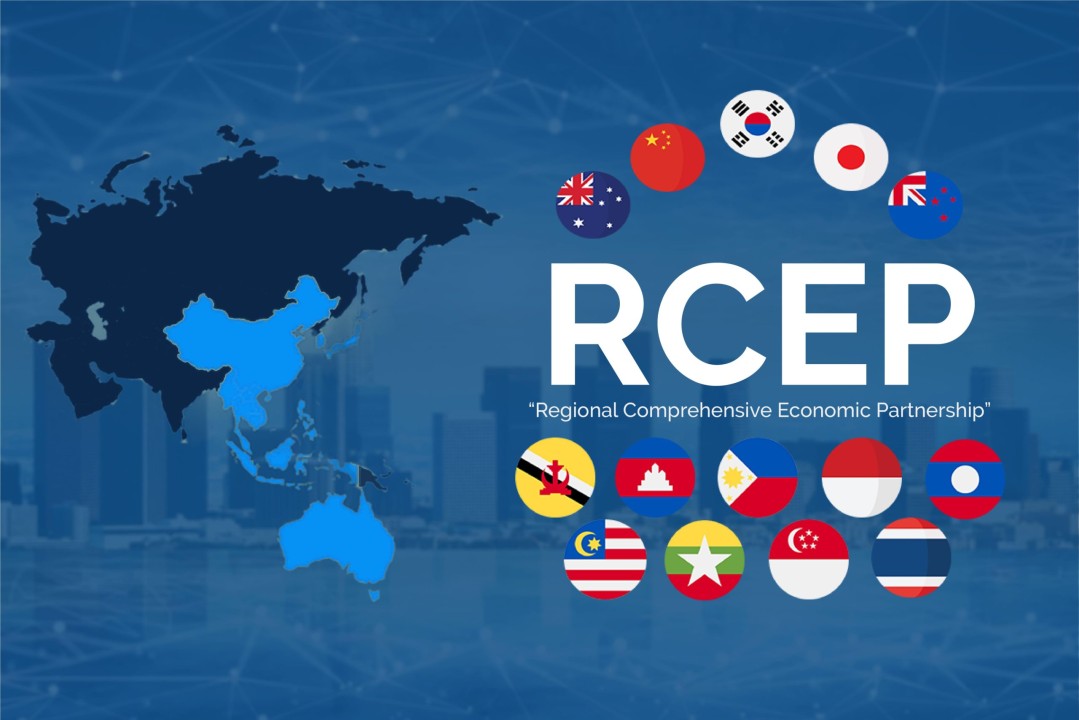
RCEP is still harmful for India
On November 4, 2019, at the Third Summit of RCEP, Prime Minister Narendra Modi announced that India was withdrawing from RCEP and he also said that his conscious does not testify that India should sign the RCEP agreement. Not only the RCEP member countries but the whole world was astonished by this announcement. But in less than five years it has become clear that india's decision was prudent and this agreement proved to be disastrous for almost all the remaining countries except China. India escaped this disaster by taking prudent decision at the right time. RCEP was a proposed agreement between 16 countries, which included 10 ASEAN countries, Japan, South Korea, New Zealand, Australia, China and India. When all efforts to persuade India to join this agreement failed, then though, not in that summit, but in the subsequent summit in November 2020, the remaining countries signed the RCEP agreement. It is worth noting that despite India's withdrawal from this agreement, the RCEP group represents 30% of the world's GDP and 30% of the population. Even after that, India has constantly been invited to join this group. In this context, the World Bank recently said that India should consider joining RCEP now. In such a situation, the debate has started again in India whether we should rejoin RCEP or not? Few economists supporting this view, may have liked World Bank's advice, but the trade figures of the last few years are telling a different story.
We will have to understand what is the situation of other countries currently included in RCEP? It will also have to be understood that if India had also reduced import duty as per the RCEP agreement (the condition of the RCEP agreement was that the countries included in it would have to reduce the import duty on 90 to 95 percent of the goods to zero), then what would have been the situation of India's imports from China? If we look at the imports, exports and trade balance of other countries included in RCEP. Since the launch of RCEP, the trade deficit of ASEAN countries with China has increased from US $81.7 billion in 2020 to US $ 135.6 billion in 2023 (66% increase). Similarly, Japan's trade deficit with China has increased from US$22.5 billion in 2020 to US$41.3 billion in 2023 (85.5% increase). South Korea, which is considered an important participant in the global supply chain, may also face a trade deficit with China for the first time in 2024. Although India's trade deficit with China has also increased rapidly, experts believe that had India joined RCEP, this deficit could have been unbearable due to zero duty on most imports. Though, the reality is that despite not joining RCEP, India is still importing goods from China in large quantities. Since 2020, India's imports from China have increased rapidly and India's imports from China have increased from $65.2 billion in 2020-21 to $101.7 billion by 2023-24. On the other hand, India has generally been exporting only precious minerals and raw materials to China, which is mostly not in India's interest. Due to the fall in exports from India to China, India's trade deficit with China has increased from US $44 billion in 2020-21 to US $85.1 billion in 2023-24. Increasing imports from China have emerged as a big challenge confronting on India's resolve for self-reliance. It can be understood that after 2020, India's GDP has grown rapidly, due to which the demand for spare parts in industries has also increased rapidly. It is believed that 75% of India's imports from China are machinery, bulk drugs, chemicals and other types of equipment and spare parts. These are the goods which are not available in India at competitive prices.
We need to understand that global value chains are generally China-centric, and other member countries have little participation in the same. This puts other countries in a vulnerable position. We also need to understand that China has built up a huge excess capacity in manufacturing. This makes it possible for China to dump all kinds of products in global markets. This dumping has caused havoc for manufacturing in most of the countries. Even countries that used to be part of GVCs earlier are losing ground to China. Many South East Asian countries, including South Korea, are living examples of this. We also need to understand that reducing import duties cannot automatically make a country a part of the global value chain; there are many other factors that play a role in that. Researchers on GVCs say that successful participation in value chains depends on the country's economic strength, the absorptive capacity of domestic firms and the enabling environment at the domestic level. The truth is that due to the neglect of industrial policy in the era of globalization, our economy is not ready to take advantage of GVCs. In such a situation, it is possible that we may remain a country producing low technology products in the value chain. The country is moving towards the goal of self-reliance by imposing various types of restrictions on imports by increasing import duties to a reasonable amount and schemes like Production Linked Incentives. In such a situation, the idea of an agreement like RCEP can derail the efforts towards self-reliance. We should not be misled by false arguments like global value chains, but should move forward towards the formulation of an appropriate industrial policy to carry forward our goal of self-reliant India in the light of the experiences of the rest of the countries involved in RCEP.


